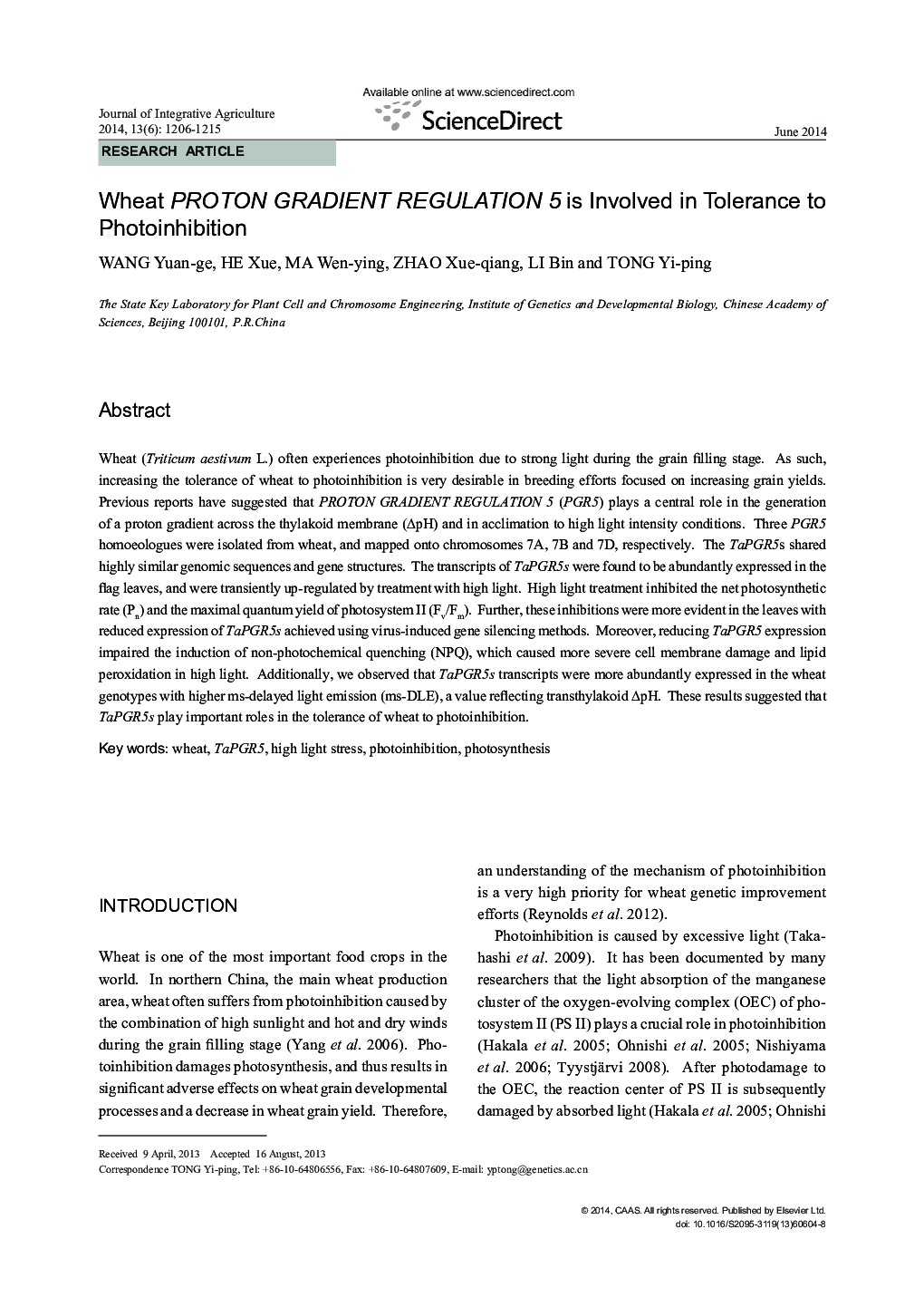| Article ID | Journal | Published Year | Pages | File Type |
|---|---|---|---|---|
| 4494542 | Journal of Integrative Agriculture | 2014 | 10 Pages |
Wheat (Triticum aestivum L.) often experiences photoinhibition due to strong light during the grain filling stage. As such, increasing the tolerance of wheat to photoinhibition is very desirable in breeding efforts focused on increasing grain yields. Previous reports have suggested that PROTON GRADIENT REGULATION 5 (PGR5) plays a central role in the generation of a proton gradient across the thylakoid membrane (ΔpH) and in acclimation to high light intensity conditions. Three PGR5 homoeologues were isolated from wheat, and mapped onto chromosomes 7A, 7B and 7D, respectively. The TaPGR5s shared highly similar genomic sequences and gene structures. The transcripts of TaPGR5s were found to be abundantly expressed in the flag leaves, and were transiently up-regulated by treatment with high light. High light treatment inhibited the net photosynthetic rate (Pn) and the maximal quantum yield of photosystem II (Fv/Fm). Further, these inhibitions were more evident in the leaves with reduced expression of TaPGR5s achieved using virus-induced gene silencing methods. Moreover, reducing TaPGR5 expression impaired the induction of non-photochemical quenching (NPQ), which caused more severe cell membrane damage and lipid peroxidation in high light. Additionally, we observed that TaPGR5s transcripts were more abundantly expressed in the wheat genotypes with higher ms-delayed light emission (ms-DLE), a value reflecting transthylakoid ΔpH. These results suggested that TaPGR5s play important roles in the tolerance of wheat to photoinhibition.
